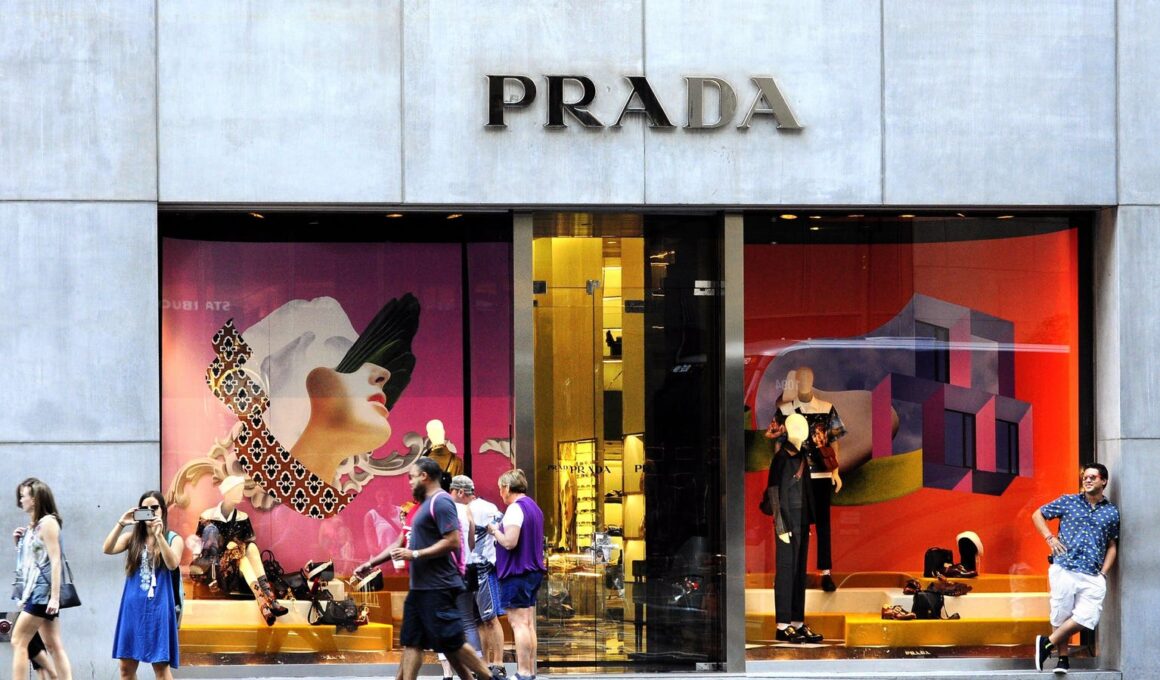Prada Sees Double Digit Growth In First Half—Joining Hermès As An Outlier Of The Luxury Slowdown
Topline
Prada Group, which owns luxury fashion brands Prada and Miu Miu, saw its latest earnings defy market trends with 18% sales growth in the first half of 2024, outperforming analyst estimates and last year’s revenue despite a broader slowdown in luxury fashion.
Entrance to a Prada store in New York. (Photo by Robert Alexander/Getty Images)
Key Facts
Prada Group reported 17% growth year-over-year with €2.55 billion ($2.76 billion) in revenue in the first half of 2024, outperforming average estimates of €2.48 billion ($2.71 billion) in the first half.
Shares rose 2% in after hours trading on the Hong Kong Stock Exchange following the earnings report and are up 21% year to date.
Sales in the Americas were up a modest 7%, while Japan sales were up the most by 55%—in line with high industry performance in the region due to the weaker yen—followed by the Middle East at 20%, Europe at 18% and Asia Pacific at 12%, continuing historical double-digit growth across all regions except the Americas.
Miu Miu saw a 93% increase in sales, topping their staggering 89% growth from last quarter, while Prada saw a 6% increase in year-over-year sales.
Despite poor performance due to declining China sales this year from luxury brands such as Hugo Boss and Burberry and behemoth LVMH, Prada continues to outperform the market following last quarter’s 18% year-over-year growth and joins Hermès—which saw strong growth led by Europe (18%) and Japan (19.5%) in the second quarter—as an outlier in the industry.
Get Forbes Breaking News Text Alerts: We’re launching text message alerts so you’ll always know the biggest stories shaping the day’s headlines. Text “Alerts” to (201) 335-0739 or sign up here.
Key Background
Prada Group remains a complete outlier in the industry with double-digit growth in Asia Pacific sales—an area luxury brands except ones like Hermès have experienced significant declines in. Hermès sales, which grew 13% in the second quarter, while seeing softer growth in China, have defied the luxury market slowdown due to its wealthier clientele spending on exclusive and coveted purchases like Birkin bags, insulating the brand from what has hit the rest of the market so hard: middle-income customers cutting back on splurges. Prada’s growth is largely driven by Miu Miu, which, despite being founded in 1993 as a youthful sister brand, only began to take off in the past few years. Miu Miu’s mini-skirts, ballet flats, bows and cardigans, which play into social media-driven fashion trends including “ballet-core” and “office-siren,” have dominated the internet and gained traction amongst the youth, according to Vogue and Who What Wear. Meanwhile, marketing through K-pop stars who have immense influence has helped the brand gain a foothold among Asian youth, according to Women’s Wear Daily. The popularity of these stars, which extend far beyond South Korea into China, Japan and Southeast Asia have helped the brand cement its positionality as the leading luxury brand for younger audiences like Gen Z who have increasing spending power. Additionally, the rise of male celebrities like ASAP Rocky, Offset and Odell Beckham Jr. donning the traditionally regarded women’s brand has added to its resurgence in popularity by playing into the brand’s unique gender neutrality. While its products may not play into the exclusivity of wealthier clientele, Miu Miu caters to an increasingly important and powerful consumer base through its experimentation and boldness, key to billionaire founder Miuccia Prada’s vision.
Tangent
Unlike its counterparts trading in European markets, Prada Group, which went public in 2011, trades on the Hong Kong Stock Exchange. The decision to IPO in a foreign country was made to tap into the market of increasingly affluent Chinese customers who would benefit the brand. China’s rapid economic growth in the 2010s not only stimulated consumer appetite, but also helped local exchanges implement market reforms yielding premiums for companies which listed and drew investor interest globally. The attractive market in China coupled with the U.S. and Europe’s unfavorable markets—due to the decades’ financial crises and resulting regulation like the Dodd-Frank Act which made IPOs more costly and highly regulated—made Chinese markets appealing for companies at the time. Prada was the first Italian company to list in Hong Kong, coming to the market around the same time as French beauty brand L’Occitane and American luggage manufacturer Samsonite, which chose the Hong Kong market for similar reasons.
Further Reading
LVMH Falls Short In First Half Of 2024 Amid Luxury Slowdown (Forbes)
Luxury Fashion Is Struggling In The First Half Of 2024—Here’s Why (Forbes)









